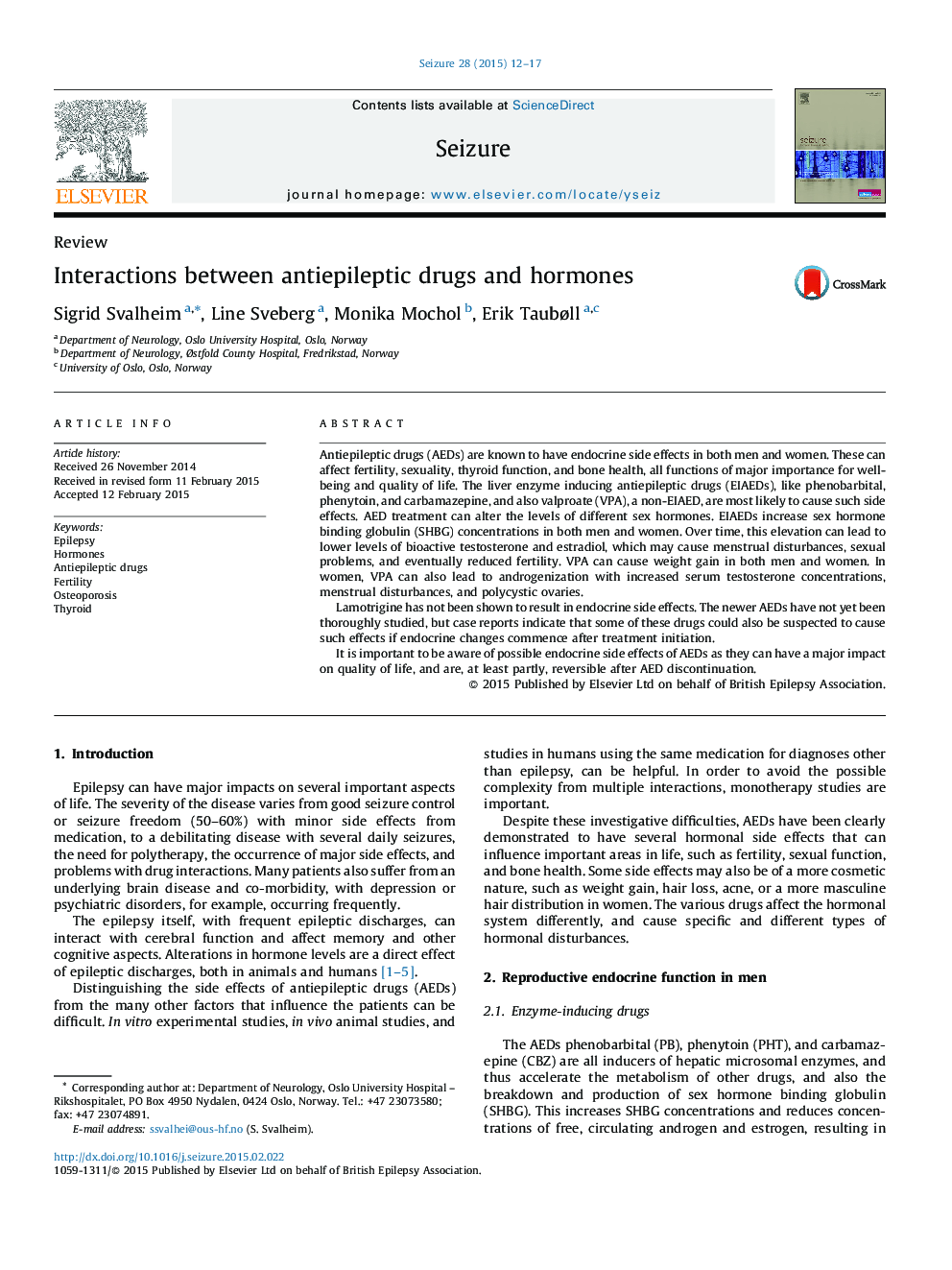| کد مقاله | کد نشریه | سال انتشار | مقاله انگلیسی | نسخه تمام متن |
|---|---|---|---|---|
| 340435 | 548287 | 2015 | 6 صفحه PDF | دانلود رایگان |
• AED treatment can alter the levels of different sex hormones.
• EIAEDs increase sex hormone binding globulin concentrations in men and women.
• VPA can increase serum testosterone, give menstrual disturbances and polycystic ovaries.
• EIAEDs can reduce bone strength and promote osteoporosis.
• EIAEDs can reduce T3, T4 and fT4, but patients are euthyroid.
Antiepileptic drugs (AEDs) are known to have endocrine side effects in both men and women. These can affect fertility, sexuality, thyroid function, and bone health, all functions of major importance for well-being and quality of life. The liver enzyme inducing antiepileptic drugs (EIAEDs), like phenobarbital, phenytoin, and carbamazepine, and also valproate (VPA), a non-EIAED, are most likely to cause such side effects. AED treatment can alter the levels of different sex hormones. EIAEDs increase sex hormone binding globulin (SHBG) concentrations in both men and women. Over time, this elevation can lead to lower levels of bioactive testosterone and estradiol, which may cause menstrual disturbances, sexual problems, and eventually reduced fertility. VPA can cause weight gain in both men and women. In women, VPA can also lead to androgenization with increased serum testosterone concentrations, menstrual disturbances, and polycystic ovaries.Lamotrigine has not been shown to result in endocrine side effects. The newer AEDs have not yet been thoroughly studied, but case reports indicate that some of these drugs could also be suspected to cause such effects if endocrine changes commence after treatment initiation.It is important to be aware of possible endocrine side effects of AEDs as they can have a major impact on quality of life, and are, at least partly, reversible after AED discontinuation.
Journal: Seizure - Volume 28, May 2015, Pages 12–17
